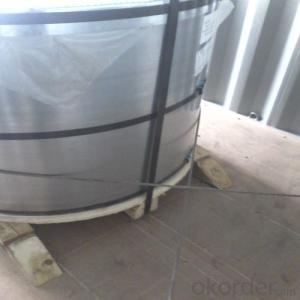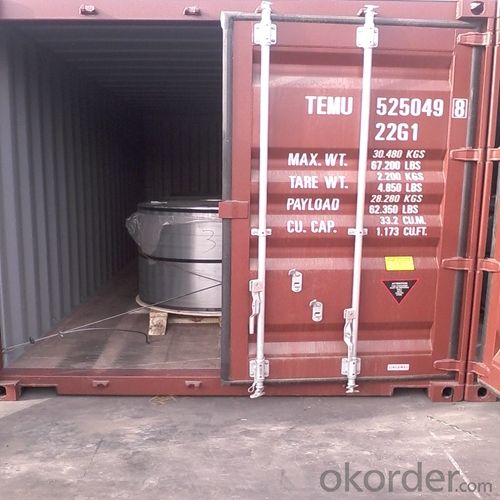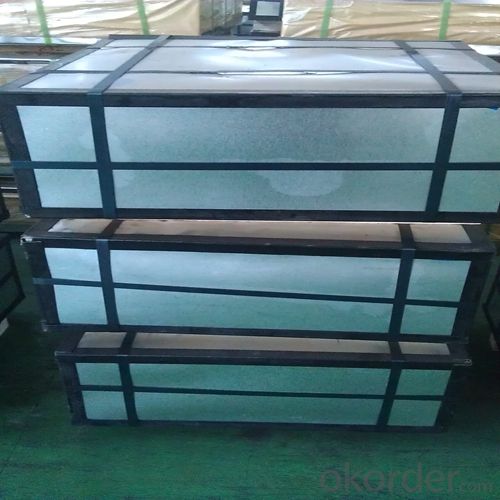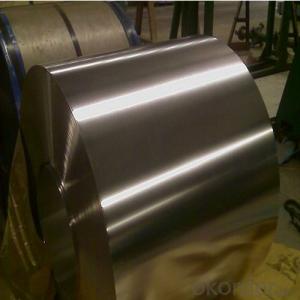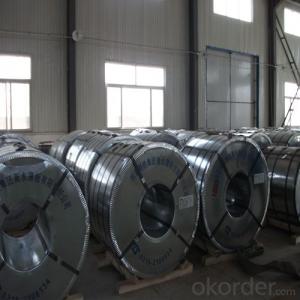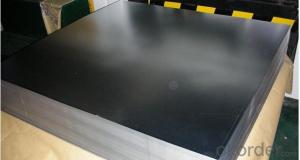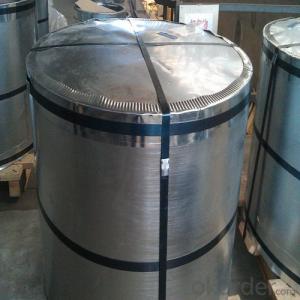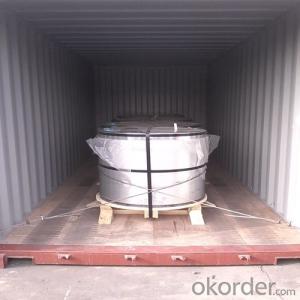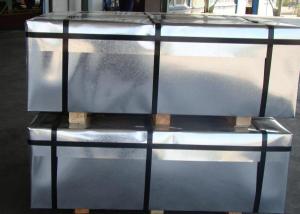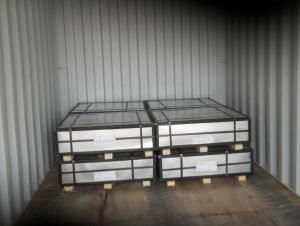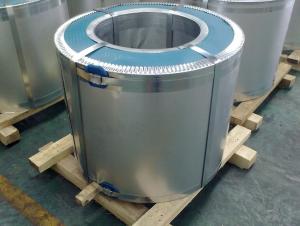Electrolytic Tinplates of High Quality for Metal Package Container
- Loading Port:
- Shanghai
- Payment Terms:
- TT OR LC
- Min Order Qty:
- 25 m.t.
- Supply Capability:
- 15000 m.t./month
OKorder Service Pledge
OKorder Financial Service
You Might Also Like
1.Structure of Electrolytic Tinplates of High Quality for Metal Package Container Description
Electrolytic Tinplate is a thin steel sheet coated by tin. It has an extremely beautiful metallic luster as well as excellent properties in corrosion resistance, solder ability, and weld ability.
2.Main Features of the Electrolytic Tinplates of High Quality for Metal Package Container
Electrolytic Tinplate undoubtedly enjoys the pride of place as a packaging medium especially for food. It owes its unique position to its "nine layer sandwich structure", each of which contributes to its eminence as a packing material. The steel base of electrolytic tinplate provides the necessary strength and formability for can fabrication. The tin-iron alloy layer provides the bond between the steel and free tin layer. The free tin layer is not only responsible for the attractive bright finish and ease of solderability but is also non-toxic- a factor of vital importance in food packaging!
Tinplate is also widely used for making all types of containers such as food cans, beverage cans, and artistic cans, tea cans, painting cans, chemical package cans and dry food package cans, metal printing etc. Its applications are not limited to containers; recently, electrolytic tinplate has also been used for making electrical machinery parts and many other products.
3.Electrolytic Tinplates of High Quality for Metal Package Container Images
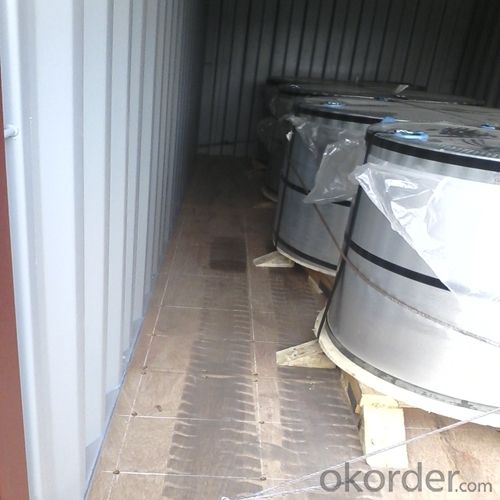
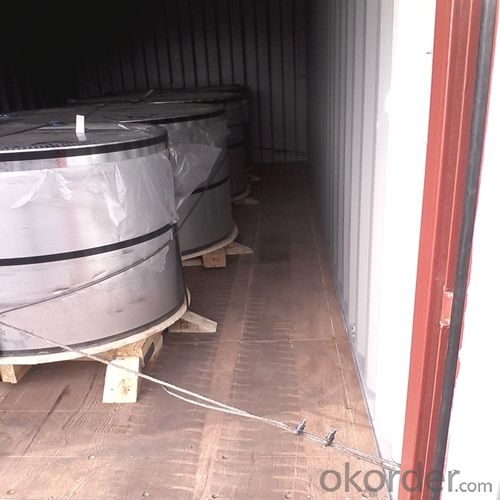
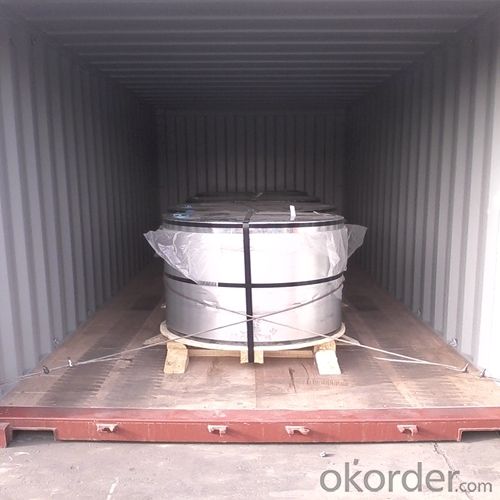
4. Electrolytic Tinplates of High Quality for Metal Package Container Specification
Standard: ISO 11949 -1995, GB/T2520-2000,JIS G3303,ASTM A623, BS EN 10202
Material: MR,SPCC
Thickness:0.15mm - 0.50mm
Width: 600mm -1150mm
Temper: T1-T5
Annealing: BA & CA
Coil Inner Diameter: 508mm
Weight: 6-10 tons/coil 1~1.7 tons/sheets bundle
Passivation:311
Oil: DOS
Surface: Finish,bright,stone,matte,silver
5.FAQ of Electrolytic Tinplates of High Quality for Metal Package Container
1. What is the delivery time for your prime quality tinplate?
Usually 35 days after order confirmation.
2. What is your Minimum Order Quantity?
Usually MOQ is 50tons for one single size, for trial order, it can be 25 tons.
3. What is the payment term?
The most common we use is L/C at sight or TT. We can also try use other terms.
- Q: What are the common defects in tinplate?
- Some common defects in tinplate include surface scratches, pinholes, tin coating irregularities, and tin adhesion issues. Other defects may include dents, corrosion, and buckles in the tinplate.
- Q: How many kinds of tinplate are there? What is the code number?
- Tinplate, also known as tin plated iron, is the common name for tin plated steel sheet. The English abbreviation is SPTE. It is a cold-rolled low carbon steel sheet or strip coated with commercially pure tin on both sides. Tin plays a major role in preventing corrosion and rusting. It will be the steel strength and formability and corrosion resistance of tin soldering, and beautiful appearance with a material, corrosion resistant, non-toxic, high strength and good ductility properties.
- Q: Can tinplate be used for HVAC systems?
- Yes, tinplate can be used for HVAC systems. Tinplate is a durable and corrosion-resistant material that is commonly used in the construction of air ducts and HVAC components. It provides excellent protection against moisture and maintains the integrity of the system, making it a suitable choice for HVAC applications.
- Q: What type of paint is suitable for tinplate?
- Enamel paint is the most suitable type of paint for tinplate due to its durability and ability to adhere well to the metal surface.
- Q: What are the limitations of printing on tinplate?
- There are several limitations to consider when printing on tinplate. First, tinplate is not a very smooth surface, which can affect the quality and resolution of the printed design. Secondly, tinplate is prone to corrosion, so special coatings or treatments may be required to ensure the longevity of the print. Additionally, tinplate is a rigid material, making it more challenging to print on curved or irregularly shaped objects. Lastly, the printing process on tinplate can be more time-consuming and costly compared to other printing methods, as it often requires specialized equipment and inks.
- Q: How does tinplate packaging contribute to reducing food waste?
- Tinplate packaging helps reduce food waste by providing a durable and airtight barrier that protects food from spoilage, contamination, and exposure to air, moisture, and light. It helps extend the shelf life of products, preserving their freshness and nutritional value for longer periods. Additionally, tinplate packaging is highly recyclable, making it a sustainable choice that reduces the environmental impact of food packaging waste.
- Q: What is the cost of tinplate compared to other packaging materials?
- The cost of tinplate is generally higher compared to other packaging materials such as aluminum, paper, or plastic. Tinplate is a durable and versatile material, but its higher cost is primarily due to the production process involving coating steel with a thin layer of tin. While other materials may offer a more cost-effective solution for certain applications, tinplate's unique properties and premium image make it a preferred choice for certain industries like food and beverages, cosmetics, and pharmaceuticals. Ultimately, the cost of tinplate should be evaluated in relation to the specific needs and requirements of the packaging project.
- Q: How does the printing process affect the durability of tinplate?
- The printing process can significantly affect the durability of tinplate. It forms a protective layer on the surface of the tinplate, making it more resistant to corrosion and external factors that may cause damage. The printing process also enhances the tinplate's scratch resistance, ensuring that the printed design remains intact for a longer period. Additionally, the printing process can provide an extra layer of insulation, protecting the tinplate from heat and moisture, further increasing its durability.
- Q: What industries use tinplate packaging?
- Tinplate packaging is commonly used in various industries such as food and beverage, cosmetics, pharmaceuticals, and industrial products.
- Q: What are the different methods of printing on tinplate?
- There are several methods of printing on tinplate, including lithography, screen printing, and digital printing. Lithography involves transferring an image onto a metal plate, which is then used to print onto the tinplate. Screen printing uses a mesh screen to apply ink onto the tinplate through open areas of the screen. Digital printing utilizes computer-controlled printers to directly apply ink onto the tinplate, allowing for greater flexibility and detailed designs.
Send your message to us
Electrolytic Tinplates of High Quality for Metal Package Container
- Loading Port:
- Shanghai
- Payment Terms:
- TT OR LC
- Min Order Qty:
- 25 m.t.
- Supply Capability:
- 15000 m.t./month
OKorder Service Pledge
OKorder Financial Service
Similar products
Hot products
Hot Searches
Related keywords
